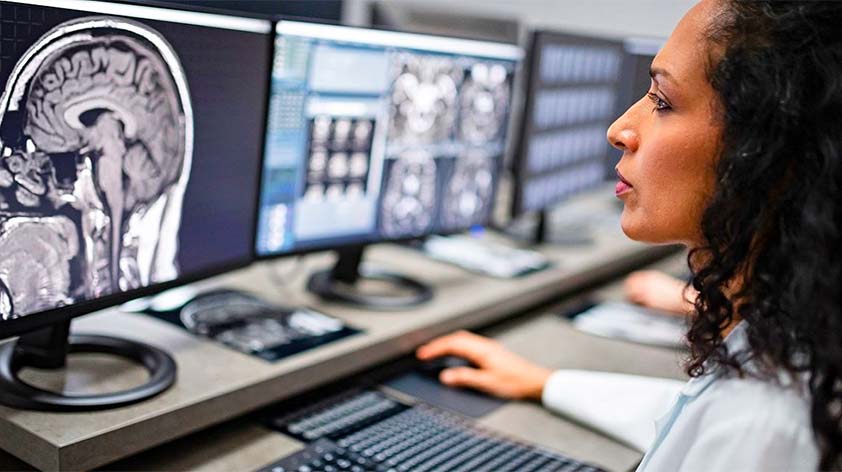
Medical imaging clinics like PRP Imaging have played an invaluable role in shaping healthcare’s ever-evolving landscape, playing an essential part in revolutionizing patient care, diagnosis and treatment. Let’s examine their profound effect on the healthcare industry as a whole.
1. Early and Accurate Diagnosis
Medical imaging clinics play an invaluable role in providing early and accurate diagnoses.
By employing techniques such as X-rays, CT scans, MRI and ultrasound examinations to visualize internal structures of the body they can detect a variety of medical conditions early enough for successful treatments to take effect and increase patient outcomes.
2. Non-Invasive Assessment Method
Medical imaging clinics provide non-invasive means for assessing internal body functions.
This reduces the need for exploratory surgeries or invasive procedures that increase patient discomfort and risks; instead non-invasive imaging technologies have become indispensable tools in diagnosing and monitoring various medical conditions.
3. Targeted Treatment
Accurate imaging enables healthcare providers to design personalized and targeted treatment plans.
From cancer therapies, orthopedic surgeries, or cardiac interventions – medical imaging provides vital data that allows healthcare providers to tailor their approach according to each patient’s unique requirements and improve treatment effectiveness significantly.
4. Advances in Radiology
Medical imaging clinics have made significant strides forward in radiology.
High-resolution imaging, 3D reconstructions, and real-time monitoring have become standard practices, giving healthcare providers greater insight into diseases, injuries and anatomical structures for improved patient care.
5. Minimizing Invasive Procedures
Invasive procedures carry with them inherent risks and require longer recovery times, but medical imaging clinics have successfully reduced the need for these surgeries by offering less invasive alternatives.
For instance, interventional radiology procedures guided by imaging have become key tools in treating conditions like vascular disease and certain forms of cancer.
6. Remote Diagnosis
Telemedicine and telehealth have seen rapid growth over recent years. Medical imaging clinics have taken notice by offering remote diagnostics and consultations from leading specialists around the globe.
Patients can access expert opinions without incurring extensive travel expenses and gain access to healthcare in remote or underserved regions.
7. Enhancing Patient Experience
Medical imaging clinics provide their patients with comfort and convenience. Their modern environment has been created to alleviate anxiety and discomfort. From child-friendly decor to open MRI machines for those suffering claustrophobia, these clinics prioritize the patient experience.
8. Preventative Medicine
Medical imaging goes far beyond diagnosing existing conditions to play an integral part in preventative healthcare.
Screening programs, like mammography for breast cancer detection and colonoscopies for colorectal cancer screenings have helped save many lives by detecting issues at an early and treatable stage.
9. Multidisciplinary Coordination
Integration of medical imaging into healthcare has fostered multidisciplinary collaboration. Radiologists, surgeons, oncologists and other specialists work collaboratively to provide patients with comprehensive care that takes into account all aspects of their condition in their treatment plans.
This approach ensures all aspects are taken into consideration before developing treatment strategies.
10. Research and Development (R&D)
Medical imaging clinics are at the forefront of research and development.
Their staff often participate in clinical trials and studies, leading to advances in imaging technologies and diagnostic techniques that benefit both current and future patients. Their dedication to research serves to benefit their business as a whole.
11. Quality Assurance
Quality control and assurance are cornerstones of medical imaging clinics, with strict regulations and guidelines designed to ensure accurate imaging results and build trust between patients and healthcare providers alike.
This commitment to quality ensures patients can trust both themselves as well as their healthcare provider in terms of patient care delivery.
12. Continuous Advancements
Medical imaging is constantly developing. New technologies, including artificial intelligence and machine learning, are being integrated into diagnostic procedures, further increasing its accuracy and efficiency.
Medical imaging clinics have heralded a new era of healthcare, revolutionizing early diagnosis, noninvasive evaluation, targeted therapy and patient experience. With technology advancing continuously and their impact set to expand further still, these clinics have truly revolutionized how we approach healthcare and medicine today.









